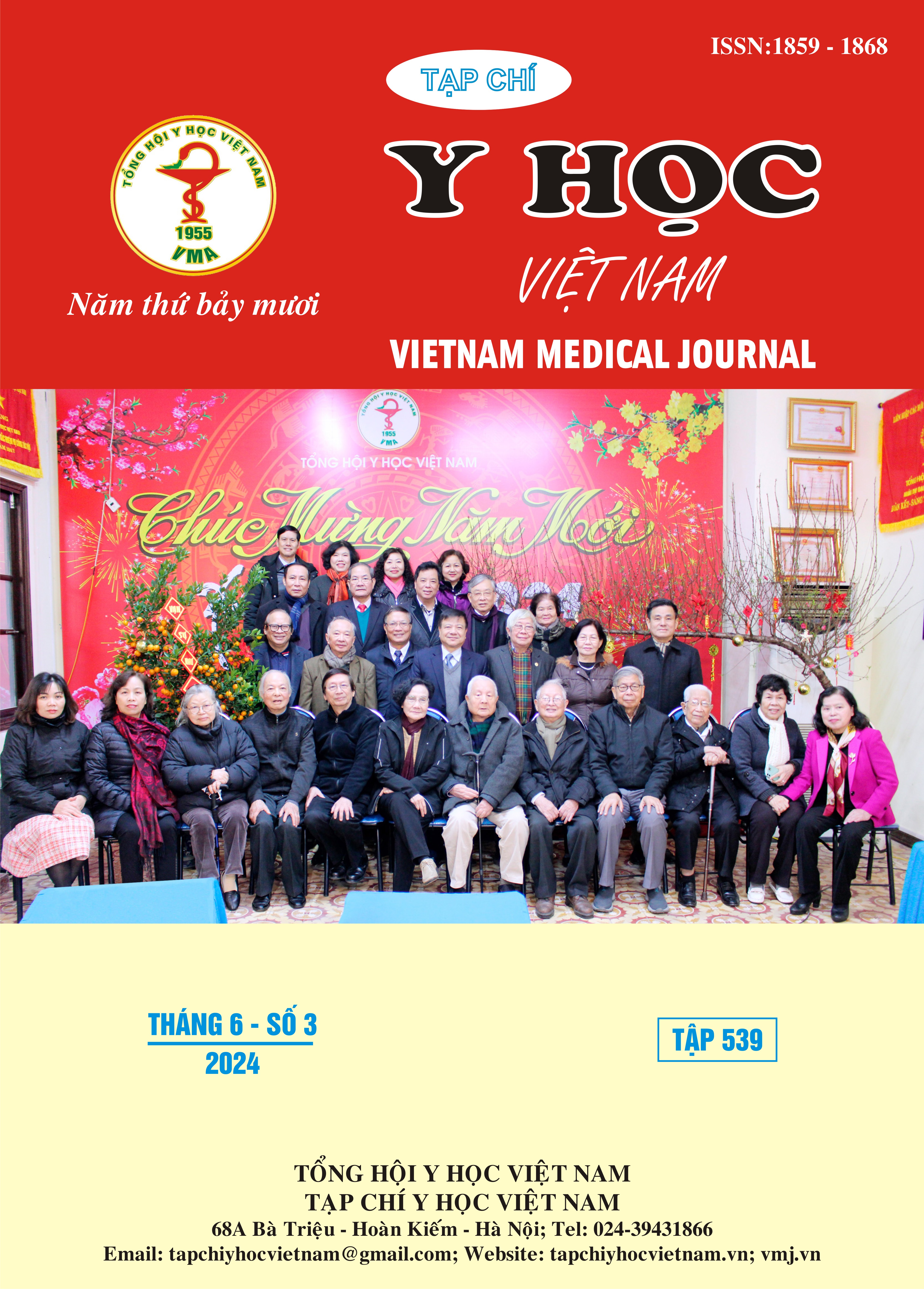A SURVEY ON THE CARDIOVASCULAR MORBIDITY AND MORTALITY RISKS ACCORDING TO ARO RISK SCORE IN MAINTENANCE HEMODIASIS PATIENTS AT MILITARY HOSPITAL 103
Main Article Content
Abstract
Objective: To survey cardiovascular morbidity and mortality risks according to ARO risk score in maintenance hemodialysis patients at Military Hospital 103. Patients and methods: A descriptive, cross-sectional study in 132 hemodialysis patients at Military Hospital 103 from March 2023 to October 2023. The two-year cardiovascular mortality risk and two-year cardiovascular morbidity and mortality risk were assessed according to ARO risk score based on input variables including: age, smoking status, etiology of chronic kidney disease, cardiovascular disease history, cancer history, body mass index, vascular access in the first 90 days of hemodialysis, actual blood flow, haemoglobin, serum ferritin, CRP level, serum creatinine, serum total calcium, serum albumin. Risk scores were calculated based on online software: https://aro-score.askimed.com/. Depending on the calculated risk score, the cardiovascular morbidity and mortality risks were divided into 3 levels: low, moderate, and high. Results: The mean two-year cardiovascular mortality risk was 7.8%, the rates of patients at low, moderate and high risks were 59.8%, 22.0% and 18.2%, respectively. The mean two–year cardiovascular morbidity and mortality risk was 30.2%, the rates of patients at low, moderate and high risks were 33.3%, 31.8% and 34.9%, respectively. The two-year cardiovascular mortality risk and two-year cardiovascular morbidity and mortality risk were higher in patients with old age, decreased HDL-C level, general dyslipidemia, elevated serum CRP level but they were not associated with gender, serum cholesterol, triglycerid, LDL-C levels. The two-year cardiovascular morbidity and mortality risk was related to time on hemodialysis. Conclusion: The cardiovascular morbidity and mortality risks in two years in maintenance hemodialysis patients were high. Old age, decreased HDL-C level, general dyslipidemia and elevated serum CRP level could associate with increasing in cardiovascular morbidity and mortality risks in maintenance hemodialysis.
Article Details
Keywords
cardiovascular morbidity, mortality risks, ARO score, hemodialysis
References
2. Floege J., Gillespie I.A., Kronenberg F., et al. (2015). Development and validation of a predictive mortality risk score from a European hemodialysis cohort. Kidney Int, 87(5), 996–1008.
3. Anker S.D., Gillespie I.A., Eckardt K.-U., et al. (2016). Development and validation of cardiovascular risk scores for haemodialysis patients. Int J Cardiol, 216, 68–77.
4. Yazdanyar A. and Newman A.B. (2009). The burden of cardiovascular disease in the elderly: morbidity, mortality, and costs. Clin Geriatr Med, 25(4), 563–577, vii.
5. Chisavu L., Mihaescu A., Bob F., et al. (2023). Trends in mortality and comorbidities in hemodialysis patients between 2012 and 2017 in an East-European Country: a retrospective study. Int Urol Nephrol, 55(10), 2579–2587.
6. Iseki K., Shinzato T., Nagura Y., et al. (2004). Factors influencing long-term survival in patients on chronic dialysis. Clin Exp Nephrol, 8(2), 89–97.
7. Navaneethan S.D., Schold J.D., Walther C.P., et al. (2018). HDL-cholesterol and causes of death in chronic kidney disease. J Clin Lipidol, 12(4), 1061-1071.e7.
8. Qureshi A.R., Alvestrand A., Divino-Filho J.C., et al. (2002). Inflammation, malnutrition, and cardiac disease as predictors of mortality in hemodialysis patients. J Am Soc Nephrol JASN, 13 Suppl 1, S28-36.


